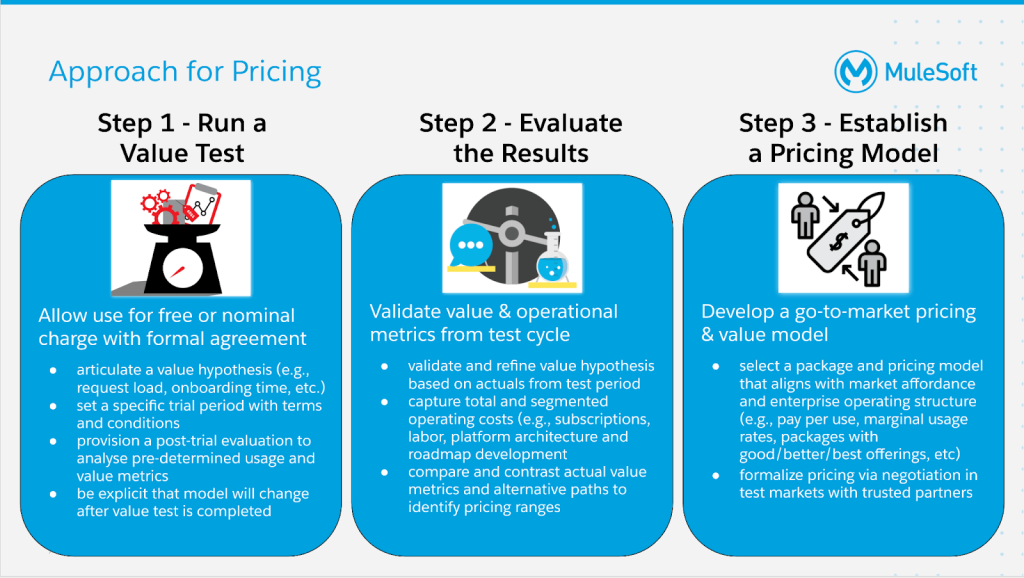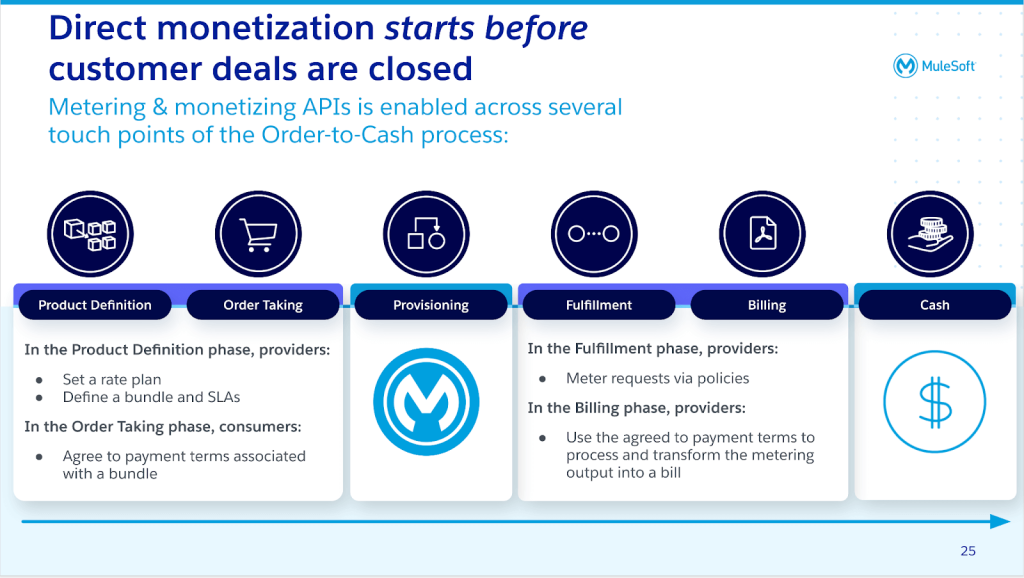With API monetization, determining the value delivered from your API products will inform a pricing and packaging strategy reflected in the business model that works best for your organization.
Quantifying value can be tricky if your organization does not handle API-based products and services. After all, it’s hard to collect complex data on the value of a potential product if you don’t offer anything comparable. However, one solution to the cold start problem is the concept of value testing pervasive in scaled media enterprises.
Value testing for API monetization
Here are the three steps of an approach for pricing:
- Step 1: Run a value test
- Step 2: Evaluate the results
- Step 3: Establish a pricing model

Let’s walk through a scenario when a TV programming exec or advertising salesperson wants to sell commercials on a new show that hasn’t aired before.
In this scenario, the advertising salesperson would approach an advertiser for the brand new show Old Wendell that will follow The Small Sound Axiom, which is currently one of the most-watched shows on television. Before approaching the advertising prospect, the salesperson would gather relevant information, like how many viewers regularly watched the current show and the demographics of that viewership. The salesperson would also collect data on how often viewers of one prime-time show flow over and watch the next show.
This data could be packaged along with typical pricing data and presented to the prospect along the lines of
- The Small Sound Axiom has 10 million viewers every week.
- Of the 10 million viewers, 25% are in your target customer segments.
- Of the 2.5 million viewers in your target segment, 50% typically stay on from the previous show and watch the follow-on show.
- Current prices for 30 seconds of commercial time for The Small Sound Axiom come down to $1 million for the one commercial broadcast 4x in a month.
- Applied together, this would indicate a price for our new spinoff series Old Wendell as $1 million x 0.25 x 0.5 = $125,000 rack rate.
With a list price of $125,000 and no actuals to back it up, the advertising salesperson would pitch a value test to the potential customer. In this value test, they would sell the time at a steep discount, say 50% for the $125,000, so $62,500. The test would also include some primary conditions to help everyone get on the same page regarding the value advertising is bringing.
Before the test has begun, you’ll define how to measure value improvements, like web traffic, same-store visits, conversions, and revenue targets. Let’s assume the value test lasts four weeks and is complete. After which, the salesperson would look at the ratings and analyze the value received. After completing this, the salesperson would create a post-test model to create a final pricing model for the services delivered during the test.
This post-test model includes:
- True up the cost based on actuals
- True down the cost based on actuals
- Both are true up and down
- Fixed regardless of actuals
This data will inform a new rack rate price that the network will use to determine the rate in the future.
Value testing is an excellent solution to the cold start issue for determining the value delivered from your API products. While the journey to API monetization can be complex, value testing is a foundational step around which your business and IT teams can align.
You can’t sell what you can’t describe
One aspect of monetizing APIs that is often overlooked is how an organization will start the conversation. CIOs might think, “all we have to do is transform a usage log into a bill,” and then sit back and watch the revenue roll in. This thinking skips over a critical component necessary to launch an individual or scalable set of products. API monetization ends with a bill but begins with a defined product and usage agreement.
To make this mindset actionable for cross-functional teams, CIOs must require initiative leaders to demonstrate two key concepts: order-to-cash processes and bundling APIs into products for sale. Let’s take a look at each in detail.
How your enterprise will enable an order-to-cash process
Order to cash is a frame enterprises use to map out end-to-end processes. The enterprise moves its customers through a series of steps, ending with the supplier collecting revenue from a customer. Your business teams will use the order-to-cash to understand how products are marketed, sold, and monetized. Since it shows teams the necessity of bundling products, this is critical regardless of how this process is enabled.
How your team will bundle APIs into products for sale
To generate significant revenue from a monetization initiative, digital product teams must consider their products in bundles. While a single API or endpoint can be a product worthy of consumption, in almost every industry example of scaled API-driven revenue, the API buyer from the consuming organization isn’t paying for an individual API. In reality, they’re paying for access to a bundled offering composed of a suite of APIs that function as a comprehensive solution.
While this point may seem directed at product strategists, CIOs must plan how the bundles will be created and offered holistically instead of one-off or ad-hoc conversations. Without a plan for configure-price-quote capabilities, IT and business teams will quickly be underwater with bespoke product configurations that will drive operational budgets and product enhancement timelines in the wrong direction.
Once a team is grounded on an order-to-cash process, it becomes self-evident that API monetization involves more than just exposing the technical capabilities and collecting a fee.
Understanding order-to-cash
Creating an invoice from a usage log requires a rate plan and bill of materials agreed upon by the supplier and the consumer.
A key takeaway for CIOs is to push IT and business teams to stay nimble in the product definition. Teams must enable a solution that doesn’t allow for rapid reconfiguration of bundled capabilities. If not, your product investments may leave money on the table. Teams will defer growth opportunities because they focus on creating a salable offering.

Order-to-cash, product bundling, and value testing can be an excellent foundation for your API monetization efforts, but there are other critical components to keep in mind.
Start your API monetization strategy with the CIOs guide to API monetization and begin to drive new revenue streams.









